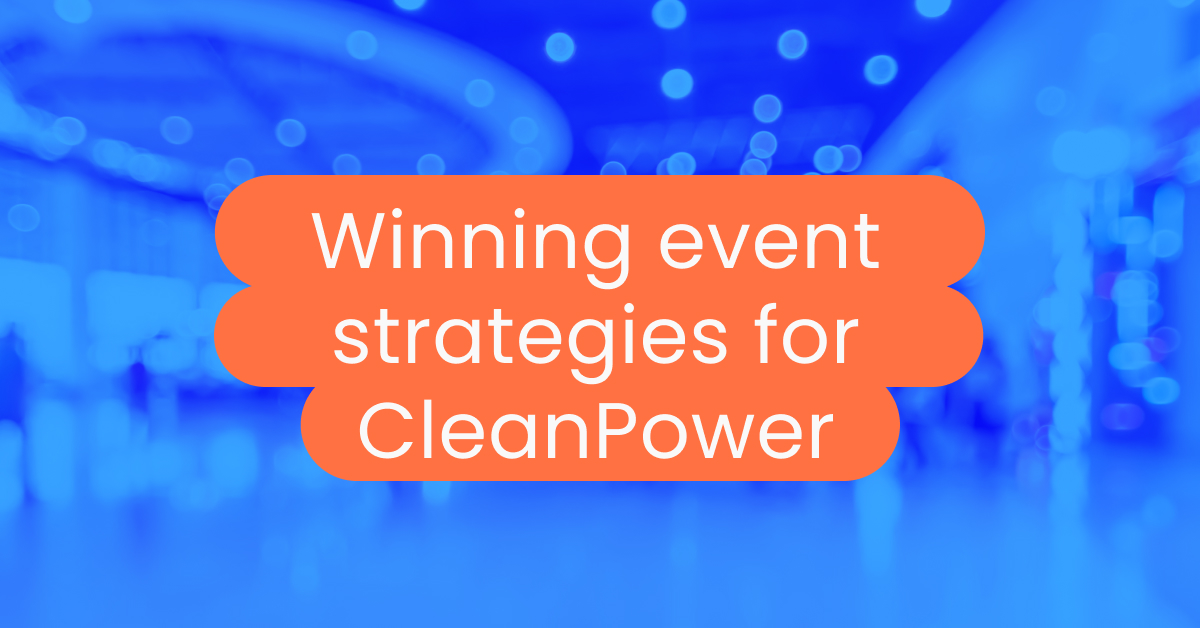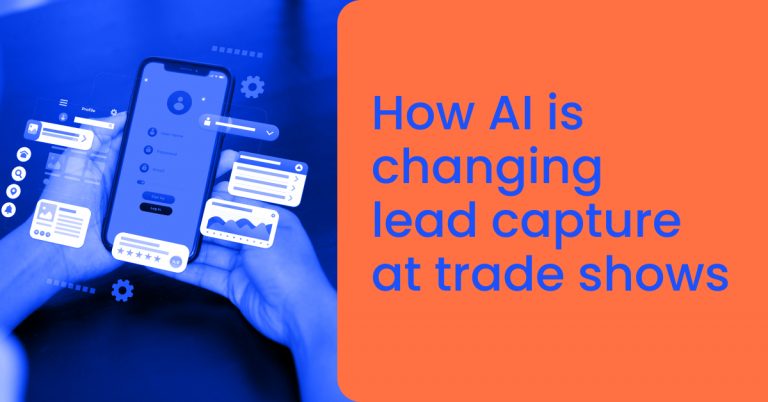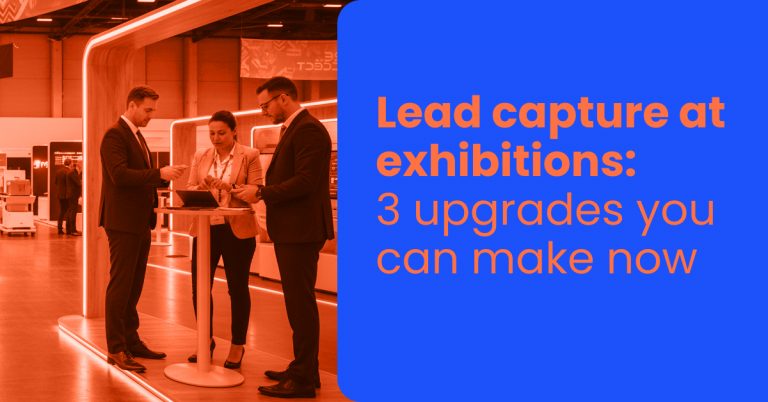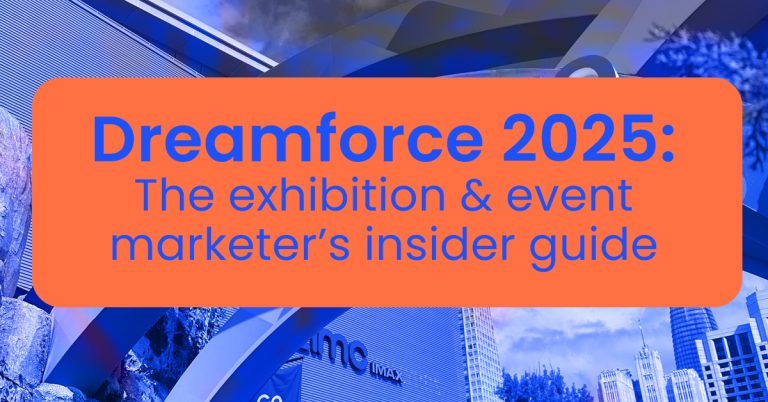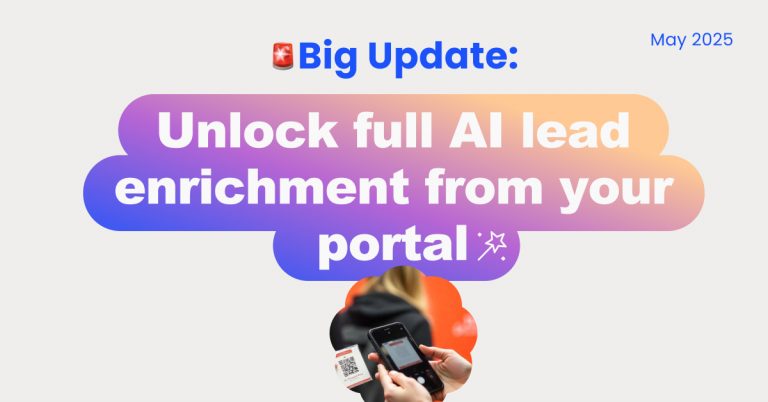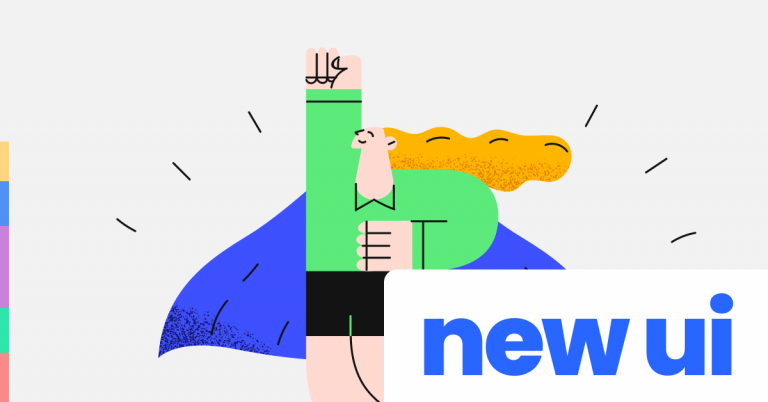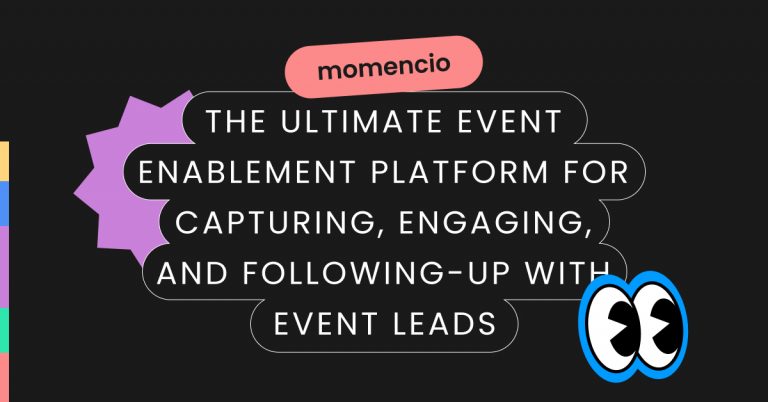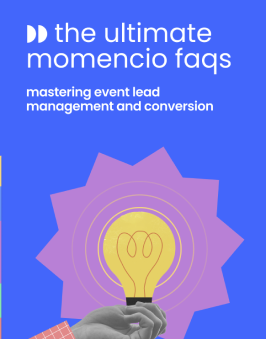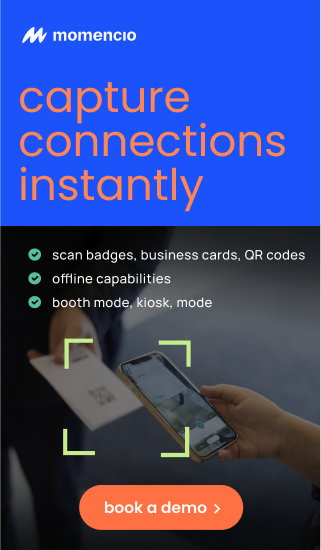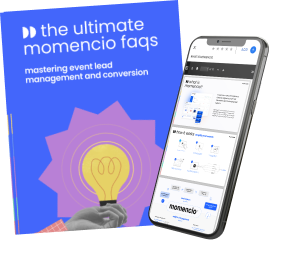The best events teams are powered by data. According to Statista, the global event marketing industry is forecast to reach $1,135.4 billion by 2026, with B2B trade shows among the most trusted marketing channels by decision-makers source. For field marketers and event planners heading to CLEANPOWER 2025, this isn’t just a number—it’s a challenge and an opportunity.
Taking place from May 19–22, 2025, at the Phoenix Convention Center, CLEANPOWER 2025 is more than a clean energy exhibition. It’s a hub for policy changemakers, renewable tech innovators, and corporate buyers navigating the energy transition. Over 9,000 attendees will walk the expo floor seeking insight, partnerships, and cutting-edge solutions in wind, solar, hydrogen, storage, and transmission.
But here’s the hard truth: even with the most visually stunning booth, success hinges on what happens before, during, and after the event. Marketers are no longer just brand ambassadors. They are data operators, lead strategists, and ROI guardians. And CLEANPOWER 2025 is a make-or-break opportunity.
This guide is built for you—the modern event pro who’s done playing defense. You’ll learn how to use real-time engagement tools, better lead capture strategies, and personalized follow-up to outperform your 2024 results and stand out in a sea of clean energy vendors.
TL;DR
To help event marketers prepare for CLEANPOWER 2025, we’ve crafted this complete playbook for better pre-event planning, more impactful on-site engagement, and smarter follow-up. Whether you’re targeting utility decision-makers or showcasing clean energy tech, this guide is built to turn your booth into a business engine.
Understanding the CLEANPOWER 2025 audience
There’s a common trap event marketers fall into when preparing for trade shows: assuming attendees are a monolith. But CLEANPOWER 2025 breaks every mold. It’s not just another clean tech expo—it’s the single most strategic gathering of cross-sector energy decision-makers in North America. To connect meaningfully here, you need to go deeper than badges and booth traffic. You need to speak their language.
Who’s actually walking the show floor?
CLEANPOWER 2025 will attract more than 9,000 attendees, from over 50 countries, covering every corner of the clean energy value chain. But this isn’t just a numbers game. These people don’t come to collect swag—they come to make decisions. Below are the core audience segments you’ll meet:
1. Utility & grid operators
These are the gatekeepers of large-scale infrastructure upgrades—people who live and breathe grid modernization, power reliability, and multi-GW storage deployments. They’re looking for scalable solutions, regulatory alignment, and vendor partners who understand the long game.
2. Project developers & EPC firms
Engineering, procurement, and construction leaders are on the hunt for vendors who can deliver quickly and compliantly. Whether it’s utility-scale wind farms or hybrid solar-hydrogen storage, they need support tools that can de-risk their execution pipeline.
3. Financial & investment decision-makers
Venture capitalists, institutional investors, and energy finance leads come to evaluate technologies for their bankability. If your product’s ROI story is fuzzy, they’ll walk past your booth.
4. Clean tech manufacturers & OEMs
From turbine blades to battery components, manufacturing execs want to explore supply chain innovations, domestic sourcing, and sustainable partnerships—especially under the scrutiny of ESG mandates.
5. Policy leaders & regulators
Attending to shape and interpret energy policy, this group brings a unique lens. They’re seeking alignment with clean energy incentives, transmission reform, and equitable access. Educational content resonates more than hard sales.
6. Field marketers, channel leads & sales teams
Yes, your peers will be there too—scouting competitive messaging, refining strategies, and testing tools. You’re not just selling—you’re being observed.
What are their real motivations?
Beyond titles and sectors, CLEANPOWER 2025 attendees are united by three urgent priorities:
✅ De-risking innovation
Many clean energy projects are first-of-their-kind. Buyers are risk-averse and need vendors who offer clarity, compliance, and confidence. They want to be sure that your solution won’t blow up their implementation timeline—or their budgets.
✅ Navigating policy & incentives
With the Inflation Reduction Act (IRA) reshaping the market, clean energy professionals are constantly interpreting new guidelines and credits. If your product helps them unlock funding or streamline compliance, lead with that. Policy fluency builds instant credibility.
✅ Scaling under pressure
Time-to-market is shrinking. Stakeholders at CLEANPOWER are under pressure to deliver results—fast. They’re hunting for partners who remove friction, not add it.
Key pain points to tap into
To create real engagement at your booth, your messaging should intersect with their top pain points, such as:
- Data disconnection: They struggle to see performance across multi-vendor, multi-site projects.
- Tech overload: They’re fatigued by tools that promise everything but require weeks to implement.
- ROI ambiguity: They’re under intense pressure to justify every dollar—and want proof, not just promises.
- Follow-up fatigue: Post-event engagement is often generic. They’ll ignore you unless it’s timely, relevant, and personalized.
This is your opportunity to stand out by solving before selling.

Aligning your message with CLEANPOWER values
One of the defining themes of CLEANPOWER 2025 is intersectionality—across disciplines, policies, and technologies. That means your brand story should reflect:
- Sustainability as strategy, not slogan
- Inclusivity, especially if you participate in programs like “CLEANPOWER in Color”
- Pragmatic optimism—solutions that are future-forward but grounded in commercial viability
This audience doesn’t want blue-sky hype. They want partners who can help them move the clean energy transition from theory to traction.
Language that resonates
Don’t fall into the trap of industry buzzwords. Speak in real outcomes. Here’s how to translate value into relevance:
| Instead of… | Say this… |
| “We’re disrupting energy” | “We help grid operators balance intermittent loads in real time” |
| “We use AI” | “We cut turbine maintenance time by 37% using predictive data” |
| “We’re scalable” | “Our platform deployed across 5 states in under 60 days” |
| “We generate leads” | “We convert 42% of booth interactions into qualified pipeline” |
Clarity is credibility.
Why this matters for marketers
Understanding your audience isn’t just about empathy—it’s a prerequisite for ROI. The CLEANPOWER 2025 crowd is analytical, time-strapped, and skeptical. But they’re also open—if you speak their language, show you understand their pressures, and deliver a tailored experience.
The most successful marketers at CLEANPOWER 2025 will be those who:
- Stop thinking like exhibitors
- Start thinking like strategic partners
And that begins with deep audience understanding—not just knowing who they are, but what they’re trying to solve.
Pre-event strategies: How to win before you arrive in Phoenix
If your event strategy starts on the show floor, you’re already behind. The most successful teams at CLEANPOWER 2025 will have already warmed up prospects, aligned internal teams, and built tactical momentum before they even set foot in the Phoenix Convention Center. That’s because today’s B2B event success hinges not just on presence, but on preparation.
Pre-event marketing is no longer about a single e-blast and a calendar invite. It’s about orchestration—coordinating audience insights, outreach, and operations in a way that makes your booth a destination, not an accident. Here’s how to make that happen.
Map your message to the moment
Start by reviewing the CLEANPOWER 2025 agenda. Not just to know when your coffee break is—but to see which sessions your ideal prospects will attend. If you’re targeting storage tech buyers, find out which panels they’re likely to attend, and tailor your messaging around those topics. Show that you’re aware of their challenges and the conversations they care about. This level of relevance creates credibility before contact.
Let’s say a major session centers on domestic manufacturing incentives in the Inflation Reduction Act. If your solution helps clean tech OEMs localize supply chains or track emissions, highlight that in pre-event outreach. Use the policy landscape to contextualize your value—not to talk about yourself, but to show you understand what your buyers are up against.
Segment your audience by role, not just company
Many teams stop at firmographics when segmenting their event targets. That’s a mistake. Attendees at CLEANPOWER 2025 may come from the same company, but they care about different things. A VP of Operations thinks in terms of project timelines and execution risks. A Marketing Director thinks in terms of brand positioning and pipeline velocity. Your outreach should speak to both differently.
Use your CRM, past event engagement data, or marketing automation platform to create outreach segments by role and seniority. Then adjust your pre-event emails, ads, and even your booth language to reflect the concerns of each persona. When people feel seen, they’re more likely to engage.
Don’t invite people—give them a reason to meet
Generic “Visit us at Booth 457” invites get ignored. Especially when inboxes are flooded weeks before an event. Instead, give your invitees a reason to meet. This might be:
- A short, exclusive in-booth demo tied to a key problem
- A custom energy report you’ll share only with booth visitors
- A chance to speak with an executive on your team who rarely attends events
- A sneak peek at upcoming product features relevant to their market
It’s not just about driving traffic. It’s about attracting the right people with the right message.
Equip your sales team early
Before the event, hold a dedicated briefing session with your sales team. Share segmented lead lists, outline qualification criteria, and rehearse key messaging that ties back to CLEANPOWER 2025 themes. Make it clear how booth interactions will be captured, scored, and routed. If reps don’t know what happens to the leads they scan, they’re less likely to take ownership of the outcome.
This is also the time to review your event KPIs. How many qualified meetings do you want to schedule in advance? What’s the expected follow-up time for Tier 1 leads? How will success be tracked? Define these before you fly to Phoenix. Clarity upfront eliminates post-event confusion.
Build pre-event content that aligns with session topics
Content that helps people plan for the event has a high open rate and often gets shared internally—especially if it’s tied to their role. Some examples include:
- “5 energy policy trends to know before CLEANPOWER 2025”
- “The clean tech buyer’s checklist for evaluating new partners”
- “How storage developers can reduce permitting delays in 2025”
Offer these as downloadable guides, and capture pre-event intent data by tracking opens, shares, and downloads. Then use those signals to prioritize who gets your highest-touch follow-up.
Offer calendar links with context
It’s not enough to just offer “Book a meeting” links. Add context. For instance: “Book 15 minutes with our CTO to talk about your Q3 storage project pipeline.” Specificity reduces friction and positions your booth as a place to solve problems, not pitch products.
Tools like Calendly, Chili Piper, or HubSpot’s meeting links allow you to segment meeting types by persona, which makes scheduling smarter and increases your conversion rate.
Run paid campaigns with geographic and role targeting
About two weeks before CLEANPOWER 2025, spin up LinkedIn and paid search campaigns focused on job titles, industries, and company sizes attending the event. Target messaging around key event themes—like renewable integration, grid stability, or project finance.
Use messaging that reinforces urgency and outcome. For example: “Clean storage is getting funded fast. Are you ready to pitch your project pipeline at CLEANPOWER 2025?”
Drive clicks to a custom landing page—not your homepage—and always include a clear CTA to schedule a meeting or download a prep asset.
Sync with your customer success and product teams
Your pre-event strategy shouldn’t just be about net new pipeline. CLEANPOWER is a fantastic moment to deepen existing relationships, gather product feedback, or announce feature rollouts. Loop in your CSM and product leads to:
- Identify customers attending the event
- Prepare strategic talking points for key accounts
- Align messaging around product updates or roadmap previews
This prevents the left hand from surprising the right. The more internally aligned you are before CLEANPOWER 2025, the more externally valuable your conversations will be.
Don’t wait for the event to start closing deals
Your goal isn’t just to generate leads—it’s to accelerate pipeline. Pre-schedule demos, send calendar invites, and pre-load your CRM with lead scoring models before the event begins. Some of your hottest prospects will already be midway through their journey by the time they step into your booth.
If you can generate even two or three pre-qualified conversations before Day 1, you’ve already outpaced half the show floor.
Wrap-up
Pre-event strategy isn’t about checking boxes—it’s about stacking the odds in your favor. CLEANPOWER 2025 will be noisy, fast-paced, and packed with opportunity. The marketers who win won’t be the ones who showed up first. They’ll be the ones who arrived ready.
On-site engagement: Make every booth interaction count
The Phoenix Convention Center will be buzzing with over 9,000 attendees during CLEANPOWER 2025, and while every booth has a story, only a few will be remembered. For event marketers, the challenge is no longer attracting foot traffic—it’s converting moments into momentum.
On-site engagement is where strategy meets execution. It’s where buyer intent can be accelerated or lost entirely. If pre-event tactics are about warming leads, on-site execution is about capturing attention, delivering value fast, and enabling your sales team to act in real time. Here’s how to do that right at CLEANPOWER 2025.
Shift from booth presence to booth performance
A flashy booth isn’t a strategy. Eye-catching design might attract attention, but it’s your experience that keeps attendees engaged. The best booths at CLEANPOWER 2025 will feel more like open studios or command centers than static displays. People don’t just want to see what you offer—they want to experience how it fits into their workflow, priorities, and future.
That means your booth isn’t a showroom. It’s a solution space.
Set up your booth to reflect the way your buyers think. For instance:
- Create separate zones for demos, casual conversations, and in-depth meetings
- Display content based on verticals (e.g., hydrogen storage, grid software, renewable procurement)
- Use clear signage to show what problems you solve, not just what you sell
Your space should make it obvious why someone should stop, what they’ll learn, and what they can do next.
Equip your team with role-based talk tracks
Every staff member at your booth should be able to speak confidently to at least two of your buyer personas. Before the show, prepare short scripts and conversation openers tailored to each audience segment:
- For utility buyers: “Are you focused more on interconnection delays or grid reliability this quarter?”
- For clean tech startups: “Are you looking to validate your tech stack or expand pilot programs?”
- For finance/investor types: “We’re seeing developers use our data tools to accelerate due diligence. Want to see how?”
Effective talk tracks don’t pitch—they prompt. They’re the difference between a disinterested scan and a qualified conversation.
Capture leads in context, not just contact
Every badge scan is a potential relationship. But without context, it’s just a name in a spreadsheet. The real value lies in what happened during the conversation. Did they mention a new project? A problem they’re solving? A competitor they’re evaluating?
You need tools that let reps instantly tag conversations with:
- Key pain points
- Product interest areas
- Urgency level
- Follow-up type (demo, quote, intro, etc.)
When integrated into your CRM in real time, this qualitative data transforms a lead from “attendee” to “opportunity with intent.” And that’s what moves the needle.
Use real-time scoring to prioritize follow-up
Not all leads deserve the same level of follow-up. And time kills deals. Use an event tool that assigns dynamic scores based on:
- Booth interaction length
- Content downloads
- Engagement with digital demos or videos
- Number of conversations or handoffs
This gives your sales team a real-time heat map of who to prioritize—so they can act before the event even ends.
Imagine closing your first deal while your competitors are still uploading leads on the plane ride home.
Activate your content library in the booth
Attendees expect to walk away with more than a brochure. Equip your booth staff with immediate access to relevant digital collateral:
- Case studies segmented by sector
- Short product overview videos
- Policy breakdowns related to IRA incentives or transmission reform
- ROI calculators or total cost of ownership models
Better yet, allow reps to text or email personalized follow-up packages on the spot—so the attendee receives it while they’re still at the show.
This isn’t just a nice touch. It gives your brand first-mover advantage and demonstrates operational excellence.
Micro-demo your value every 30 minutes
Schedule quick, high-value “power sessions” at your booth. These could be 7–10 minute live demos, thought leadership talks, or mini-panels led by your execs or product team. Promote them with signage, QR codes, or even low-cost push notifications via the event app.
Micro-demos serve multiple purposes:
- They cluster foot traffic around your booth
- They anchor your booth as a learning zone
- They give your team structure and rhythm during chaotic show hours
And when you make these sessions opt-in via a quick form, you’re generating qualified leads with real engagement data—not just passerby scans.
Capture content from your conversations
Your booth isn’t just a sales station—it’s a content machine. Assign one person to document:
- Common questions attendees ask
- Pain points they mention most often
- Themes that emerge across sectors
This material becomes gold for post-event nurture campaigns, blog posts, and future sales enablement content. The language you collect here reflects how real buyers talk—not how your website copy reads.
Record quick video testimonials (with permission), short interviews with your team, or quick “ask an expert” moments. The more organic, the better.
Let prospects self-educate in your booth
Not everyone wants to be pitched. Some attendees prefer to browse on their own. Create digital kiosks or tablets where people can:
- Explore your product or platform
- Answer a few questions that generate personalized recommendations
- Sign up for tailored demos or pricing quotes
This allows your booth to scale—because while one rep is in a deep conversation, another lead is learning at their own pace. Self-directed engagement also gives you first-party data about what interests them most.
Keep sales and marketing in sync (in real time)
Have a live Slack channel or SMS group for your booth team, marketers, and inside sales reps. Use it to share:
- High-priority leads that need immediate action
- Booth schedule changes
- Common objections surfacing in conversations
- Content requests from prospects
This micro-collaboration ensures that no lead slips through the cracks, and every team member is equipped with the latest info. Think of it as your virtual command center.
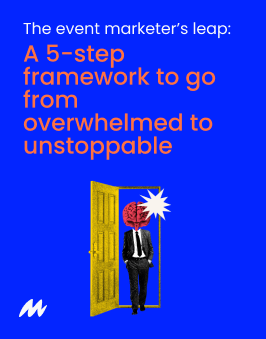
Wrap-up
On-site engagement at CLEANPOWER 2025 isn’t about collecting names—it’s about delivering value in compressed timeframes. You only have a few minutes (or seconds) to leave an impression, gather context, and spark next steps.
The marketers and sales teams who win in Phoenix will be those who build booths that educate, equip reps with personalized insights, and execute with agility. Because at an event this competitive, attention is earned, not given.
Post-event follow-up: The magic happens after the badge scan
There’s a dangerous assumption that many event marketers make: once the booth is packed up and your team is back at HQ, the job is done. But that’s where the real work begins. Because while CLEANPOWER 2025 might end on May 22, the opportunity to turn those conversations into customers is just beginning.
Your leads are at their warmest within 48 hours after the event. Attention is still fresh, interest is high, and buying signals are strong. Yet, according to CEIR, more than 50% of companies take over a week to follow up after an event. By then, your competitor may already be halfway through the sales cycle.
Effective post-event strategy isn’t just about sending a thank-you email. It’s about building a structured system that converts leads into deals—and doing it quickly, personally, and intelligently.
Step 1: Segment leads before sending anything
Before you hit “send” on any follow-up, start by segmenting leads based on quality, engagement level, and conversation details captured during the event.
Your post-event audience likely falls into three buckets:
- Hot leads – Engaged decision-makers who showed clear buying intent (e.g., requested a demo, asked pricing questions, brought team members)
- Warm leads – Expressed interest but need more nurturing or aren’t the right person to buy
- Cold leads – Passive visitors or people who dropped by for swag with little engagement
This segmentation should be driven by the data captured at the booth: duration of interaction, scanned materials, attended micro-sessions, and conversation notes. If your lead capture system lacks this detail, you’re flying blind.
Step 2: Deliver personalized follow-ups within 48 hours
Speed matters. But relevance matters more. The first 48 hours are your window to deliver value that reflects the exact experience each person had at your booth. Here’s how to do that effectively:
- For hot leads: Send a tailored recap of the conversation, next steps, a calendar link for a demo, and any requested content or pricing.
- For warm leads: Deliver a curated resource package—case studies, sector-specific guides, or a post-event microsite showcasing your product’s relevance to their role.
- For cold leads: Send a light-touch thank-you with an option to opt into more content or schedule a time to reconnect down the line.
Avoid sending the same email blast to everyone. Use dynamic email content blocks or marketing automation workflows to personalize at scale.
Step 3: Use microsites, not just emails
Instead of just a follow-up email, deliver each lead a personalized microsite that includes:
- A summary of what your brand showcased at CLEANPOWER 2025
- Relevant resources based on their interests (e.g., policy explainer PDFs, ROI calculators, demo videos)
- Team contacts they met at the booth
- A clear next step: “Book a call,” “Download full specs,” “Request proposal,” etc.
Microsites turn static follow-ups into interactive experiences. They also give you trackable data on what content your lead consumes—useful for further scoring and routing.
Step 4: Coordinate with sales for immediate outreach
Your sales team shouldn’t wait for marketing to finish a nurture series. Once hot leads are identified, sales should follow up with personal emails or calls. Marketing’s role is to provide context—notes from the booth, engagement history, and talking points—so sales isn’t starting from scratch.
Host a debrief with sales within three business days of the event to:
- Review top Tier 1 accounts
- Assign ownership
- Confirm follow-up sequences
- Align on KPIs (demo bookings, MQLs, proposal requests)
Sales-marketing misalignment post-event is one of the top reasons leads go cold. Avoid it by syncing early and often.
Step 5: Automate multi-touch nurture sequences
For leads not ready to buy, don’t go dark. Design a 30–60 day post-event nurture series that provides value and reinforces the problem your product solves. Structure it like this:
- Day 1: Thank-you + resource bundle
- Day 5: Case study relevant to their vertical
- Day 10: Invite to a follow-up webinar or coffee chat
- Day 20: ROI calculator or downloadable framework
- Day 30: Direct CTA to book a strategy call or demo
Make every email educational. The goal is not to sell but to build trust and recall, so when they are ready, your name is top of mind.
Step 6: Track real engagement metrics—not just opens
Traditional post-event reporting often focuses on vanity metrics like email open rates or total leads captured. What you really need to track:
- Follow-up time per lead (avg. time from scan to first sales touch)
- Microsite engagement rate
- Number of Tier 1 leads converted into pipeline
- Average lead score by persona
- Revenue influence from event-sourced contacts over 90 days
This level of insight requires good data hygiene, integration with your CRM, and a platform that captures contextual lead interactions. Tools like momencio can help automate and centralize this process, so you’re not juggling spreadsheets or waiting weeks for insights.
Step 7: Run a post-event feedback loop internally
The event might be over, but your optimization process is just getting started. Host a retrospective with your marketing and sales team to answer:
- What messaging resonated most?
- Which assets or demos got the most traction?
- What lead capture method worked best?
- What were the biggest missed opportunities?
- What will we change before our next event?
Document these insights in a shared space so your learnings carry forward—not just into next year’s CLEANPOWER, but every event in your calendar.
Wrap-up
A badge scan is not a sale. CLEANPOWER 2025 will leave you with dozens—possibly hundreds—of contacts. But only those followed up with speed, context, and care will translate into real pipeline.
Post-event success belongs to the teams that treat follow-up as a campaign, not a task. Those that move fast, but also move smart. That’s where the real ROI lives—and that’s how the best event marketers turn busy booths into booked business.
Best practices for driving results at CLEANPOWER 2025
Best practices aren’t about sticking to industry clichés. They’re about frameworks that actually work—especially when your team is juggling logistics, pressure to perform, and a high-expectation audience like the one at CLEANPOWER 2025. These six practices are battle-tested for field marketers, event planners, and sales-enablement leaders looking to turn this event into a serious growth lever.
Each tip is paired with a tactical example—and shows exactly how momencio can help teams execute faster, smarter, and with more impact.
1. Capture smarter, not just more
The tip: Avoid the trap of collecting as many contacts as possible with no qualification. Focus on capturing leads in a way that prioritizes context, buyer intent, and future conversion value.
Why it matters at CLEANPOWER: Clean energy buyers aren’t impulse purchasers. Their buying cycles are long and complex. Simply having someone scan their badge doesn’t mean they’re a fit.
How to do it right:
- Train your booth staff to ask 2–3 key qualifying questions before scanning
- Add tags for vertical, project phase, and urgency at the time of capture
- Log conversation summaries directly into your CRM or lead platform
How momencio helps:
momencio enables in-booth lead capture enriched with real-time tags, conversation notes, and scoring. It instantly syncs to your CRM with context intact—so every lead enters your system ready for follow-up, not cleanup.
2. Streamline team collaboration on the ground
The tip: A booth team that doesn’t communicate is a booth that underperforms. Build micro-workflows and communication channels that keep your sales, marketing, and ops teams aligned—hour by hour, not just day by day.
Why it matters at CLEANPOWER: With such a diverse, high-intensity event, timing and coordination are everything. Prospects move fast. Your team has to move faster.
How to do it right:
- Set up a private Slack or Teams channel to coordinate in real time
- Use a shared doc or dashboard to log high-priority leads as they’re captured
- Define in advance how content requests, demo escalations, or executive intros are handled on-site
How momencio helps:
momencio provides a unified, mobile-friendly platform where all team members can see real-time booth activity, lead scoring, and notes—reducing duplication, missed opportunities, or post-show confusion.
3. Deliver post-event follow-ups instantly
The tip: Forget the idea of batching emails three days later. The goal is to deliver meaningful follow-up within hours, while conversations are still fresh in the prospect’s mind.
Why it matters at CLEANPOWER: Your leads are walking the floor with 50+ other vendors. Whoever follows up first—with context—has a massive advantage.
How to do it right:
- Pre-build post-event follow-up templates segmented by persona and engagement type
- Automate personalized emails and microsite sends immediately after lead capture
- Trigger follow-ups directly from your booth
How momencio helps:
With momencio, you can automate the delivery of personalized microsites and content packages as soon as a badge is scanned—so your brand is the first in your prospect’s inbox, not the 15th.
4. Centralize all marketing content and assets
The tip: Equip your reps with one place to access, present, and share key marketing assets—without digging through email folders or slow-loading drives.
Why it matters at CLEANPOWER: You’re likely speaking to buyers from different segments—utilities, developers, regulators. Each needs tailored content. If your team can’t find the right one in 10 seconds, the moment is lost.
How to do it right:
- Organize your content by buyer persona, industry, or funnel stage
- Use tablets or booth monitors to present and send content on the fly
- Make sure assets are downloadable offline in case of Wi-Fi issues
How momencio helps:
momencio includes a digital content library that makes your entire asset bank instantly searchable, accessible, and sharable during the event. It also tracks what each lead downloaded—giving you another engagement signal.
5. Score leads by intent, not vanity
The tip: Don’t waste time chasing every badge scan. Use a structured, data-backed system to prioritize the highest intent leads.
Why it matters at CLEANPOWER: With thousands of attendees and limited sales bandwidth, your team needs to know who to follow up with first—and why.
How to do it right:
- Score leads based on booth behavior (engagement time, questions asked, content viewed)
- Layer in external data like company size, industry, and title
- Create follow-up tiers (e.g., demo request, resource interest, casual interaction)
How momencio helps:
momencio uses real-time engagement signals, content interactions, and custom criteria to assign lead scores automatically—so your follow-up team gets a ranked list of who matters most.
6. Prove ROI with confidence
The tip: Set clear, measurable event goals—and make sure your platform tracks pipeline influence, not just lead volume.
Why it matters at CLEANPOWER: Your CMO and CRO won’t care how many booth visits you had. They care about sales pipeline, revenue contribution, and strategic brand exposure.
How to do it right:
- Define success metrics pre-event (e.g., MQLs generated, demos booked, SQLs by vertical)
- Track lead progression across your funnel in the 90 days after the event
- Analyze what content, demos, or tactics drove the best results
How momencio helps:
momencio delivers an executive-ready dashboard that maps captured leads to pipeline creation and deal acceleration—so you can report back with clarity, not guesswork.
Conclusion
CLEANPOWER 2025 is more than just a gathering of the clean energy industry’s biggest names—it’s a proving ground for marketers who want to turn fleeting booth visits into real business outcomes.
The difference between showing up and standing out comes down to preparation, execution, and follow-through. That means knowing your audience, engaging with purpose, capturing leads intelligently, and following up with intent. Most importantly, it’s about proving your event ROI in language your sales and executive teams care about: leads, pipeline, and revenue.
You don’t need a bigger booth—you need a smarter strategy.
And if you want to simplify the tech, align your team, and move faster from lead to deal, tools like momencio exist to help you do exactly that.
If you’re ready to stop guessing and start growing, it’s time to modernize your event lead capture and follow-up strategy. See how momencio can power up your team at CLEANPOWER 2025 and beyond.
👉 Book a personalized demo now
FAQs
- How soon should we follow up after CLEANPOWER 2025?
- Follow up within 24–48 hours while your brand is still fresh in attendees’ minds. Personalization and speed make the difference between cold and closed.
- What kind of content should we send post-event?
- Tailored microsites, case studies, and session-relevant materials perform best. Align resources to the attendee’s role and the conversation you had.
- How do we prioritize leads from the event?
- Score leads based on booth activity, interest signals, and captured context—not just who got scanned. Use a system that helps you flag urgency fast.
- What metrics should we track to prove ROI?
- Focus on pipeline generated, conversion rate from event leads, and influence on active deals—not just raw lead count.
- Can momencio integrate with our existing CRM or tools?
- Yes. momencio offers seamless integration with Salesforce, HubSpot, Marketo, and most major marketing and sales platforms for clean, automatic data flow.
